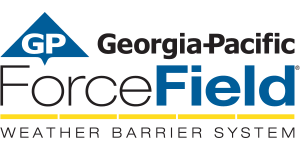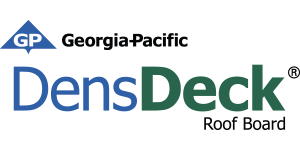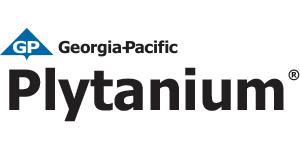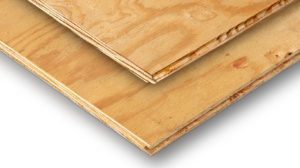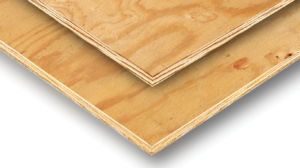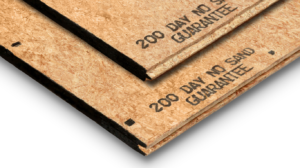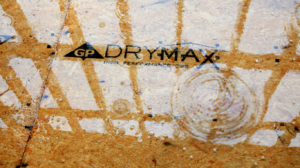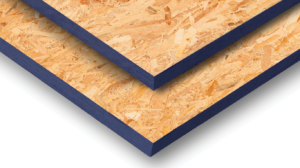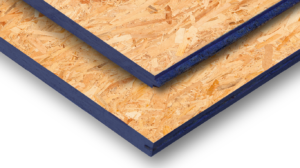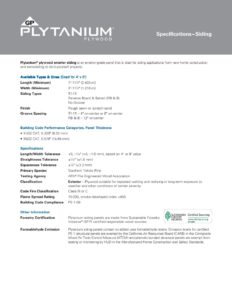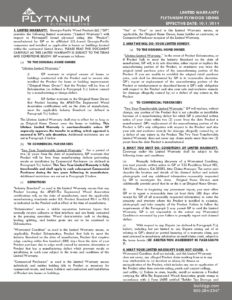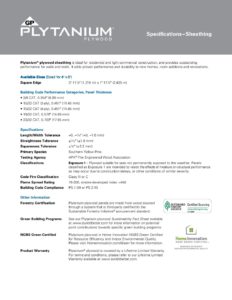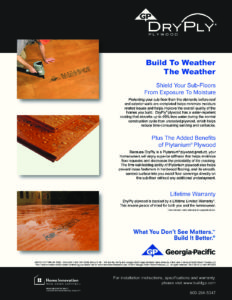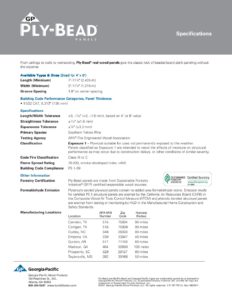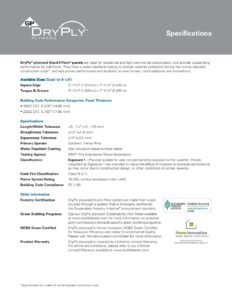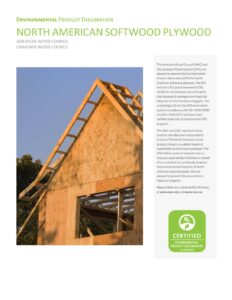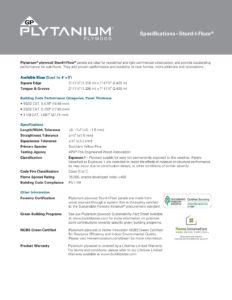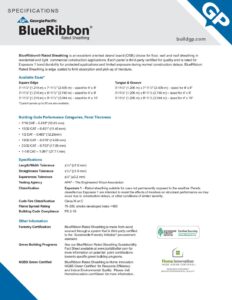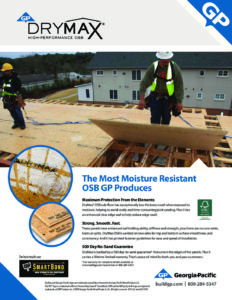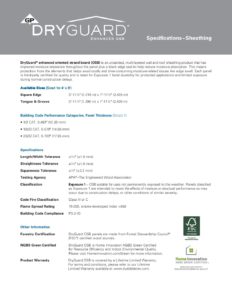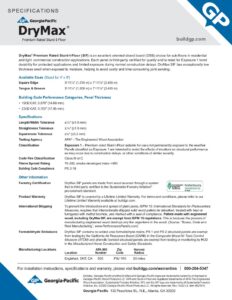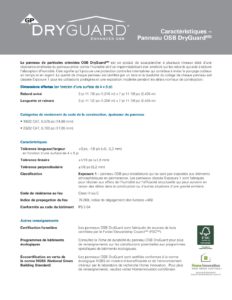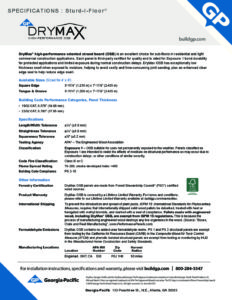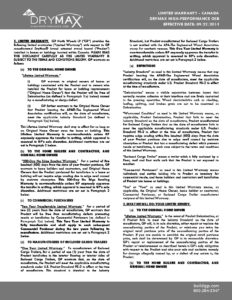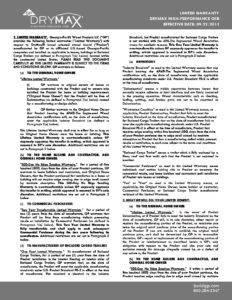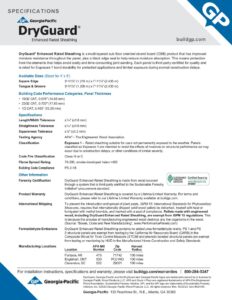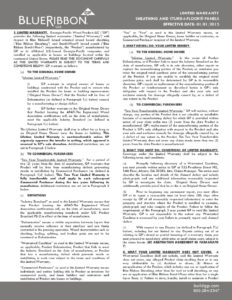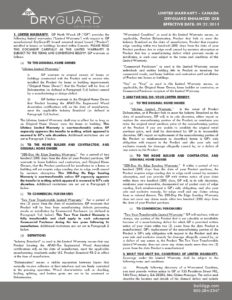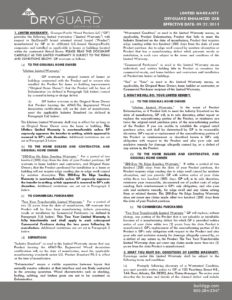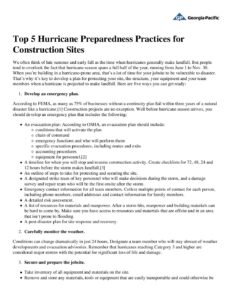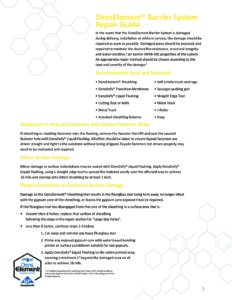No results found, try expanding your search filters.
Can you paint plywood?
Yes, plywood can be painted using one coat of acrylic latex primer and at least two coats of acrylic latex paint. Oil-based paints are not recommended.
How many sheets are in a unit of plywood?
The number of panels in a unit of plywood varies depending on the type and thickness of product. On sheathing products, the piece count is typically stenciled on the side of the unit. Other products have corrugated side protectors that should indicate piece count. If you need a piece count and neither of those are visible please contact GP at 800-284-5347.
Can plywood be used for outdoor projects?
Plywood panels classified as “Exterior” are suitable for applications subject to long-term exposure to weather or moisture.
What is the flame spread classification for plywood?
Is there a difference between span ratings for OSB and plywood?
No, span ratings for similar thicknesses are the same.
What is the proper way to store plywood on the yard or on a job site?
Whenever possible, store panels under a roof. Keep sanded panels and appearance-grade products away from high-traffic areas to prevent damage to surfaces. Use pieces of lumber to weigh down the top panel in a stack to reduce warpage from humidity. If moisture absorption is expected, cut steel bands on bundles to prevent edge damage.
If panels must be stored outside, stack them on a level platform supported by at least three 4x4s to keep them off the ground. Place one 4×4 in the center and the other two 4x4s 12 to 16 inches from the ends. Never leave panels or the platform in direct contact with the ground.
Cover the stack loosely with plastic sheets or tarps. Anchor the covering at the top of the stack, but keep it open and away from the sides and bottom to ensure good ventilation. Tight coverings prevent air circulation and when exposed to sunlight, may promote mold or mildew. (Source: APA Builder Tip U450: Storage and Handling of APA Trademarked Panels)
Why would I switch from plywood to DryMax?
Technological advancements in the manufacturing of engineered wood products have allowed GP to produce a panel that performs better than plywood in moisture resistance testing, and is comparable to plywood in the areas of durability and strength.
What does the stamp on my plywood panel mean?
On every Georgia-Pacific sheathing panel you should be able to find an APA grade stamp. This stamp is your assurance that the product is manufactured in accordance with the APA’s rigorous program of quality inspection and testing. The grade stamp on a panel also tells you a lot about the panel – the span rating, exposure rating, panel thickness and the building code approval the panel meets.
How many veneers/plies make up your plywood products?
The number of veneers/plies in our plywood products depends on thickness of the product. Here are the standard number of veneers/plies for some of our common thicknesses:
¼ – 3-ply
3/8 – 3-ply
11/32 – 3-ply
15/32 – 3-ply OR 4-ply
19/32 – 4-ply OR 5-ply
23/32 – 5-ply
7/8 – 6-ply
What does the "span rating" of a plywood panel mean?
Within the grade stamp on a panel you will find the span rating. When there are two numbers separated by a slash (i.e. 48/24), the first number is the maximum recommended center-to-center spacing for supports in inches when the panel is used for roof sheathing with the long dimension across supports. The second number is the maximum center-to-center spacing of supports in inches when the panel is used for sub-flooring with the long dimension across supports.
When used in the manufacture of crates and pallets, are Georgia-Pacific plywood and OSB safe for international shipping?
To prevent the introduction and spread of plant pests, ISPM 15: International Standards for Phytosanitary Measures, requires that internationally shipped solid wood pallets be debarked, treated with heat or fumigated with methyl bromide, and marked with a seal of compliance. Pallets made with engineered wood are exempt from ISPM 15 regulations. This is because the process of manufacturing engineered wood destroys any live organisms in the wood. (Source: “Boxes, Crate and Reel Manufacturing,” www.PerformancePanels.com)
How do DryMax cargo panels compare to plywood in terms of strength and fastener holding ability?
DryMax cargo panels are Structural-1 grade panels manufactured specifically for industrial use. They are comparable in strength and fastener holding to commercial plywood grades. Specific information about DryMax cargo panel properties can be found in APA Product Report PR-N135 at www.apawood.org.
Which side is the back of the DensArmor Plus® panel?
The GOLD color side of DensArmor Plus® panels with the product logo is the back of the panel and should be installed facing the framing or studs. The white side or front has tapered edges for finishing.
Which side of DensArmor Plus® Interior Panels should be painted or finished?
Attach the DensArmor Plus® panel with the GOLD color side of the panel facing the studs or furring strips. Paint or apply a finish to the white, tapered edge side of the panel facing the interior of the room.
Can you paint OSB?
OSB can be painted with an oil-based paint. Latex paints are not recommended.
What is the proper way to store OSB on the yard or on a job site?
Whenever possible, store panels under a roof. Keep sanded panels and appearance-grade products away from high-traffic areas to prevent damage to surfaces. Use pieces of lumber to weigh down the top panel in a stack to reduce warpage from humidity. If moisture absorption is expected, cut steel bands on bundles to prevent edge damage.
If panels must be stored outside, stack them on a level platform supported by at least three 4x4s to keep them off the ground. Place one 4×4 in the center and the other two 4x4s 12 to 16 inches from the ends. Never leave panels or the platform in direct contact with the ground.
Cover the stack loosely with plastic sheets or tarps. Anchor the covering at the top of the stack, but keep it open and away from the sides and bottom to ensure good ventilation. Tight coverings prevent air circulation and when exposed to sunlight, may promote mold or mildew. (Source: APA Builder Tip U450: Storage and Handling of APA Trademarked Panels)
How many sheets are in a unit of OSB?
The number of panels in a unit of OSB varies depending on the type and thickness of product. On sheathing products, the piece count is typically stenciled on the side of the unit. Other products have corrugated side protectors that should indicate piece count. If you need a piece count and neither of those are visible, please contact GP at 800-284-5347.
Can OSB be used for outdoor projects?
OSB is not recommended for outdoor projects. OSB is considered an Exposure 1 panel, which means they may be used for applications where construction delays may be expected prior to providing protection. But OSB is not suitable for long-term exposure to the weather.
What is the flame spread classification for OSB?
Is the acrylic coated side of DensShield® Tile Backer installed face out?
Yes. The DensShield® Tile Backer panel should be positioned next to framing with the acrylic coated (grey) side facing away from studs. Apply mortar or mastic and tile to the acrylic coated (grey) side of DensShield Tile Backer panels. The built-in acrylic coating stops moisture penetration at the surface.
What does the stamp on my OSB panel mean?
On every Georgia-Pacific sheathing panel you should be able to find an APA grade stamp. This stamp is your assurance that the product is manufactured in accordance with the APA’s rigorous program of quality inspection and testing. The grade stamp on a panel also tells you a lot about the panel – the span rating, exposure rating, panel thickness and the building code approval the panel meets.
What does the "span rating" of an OSB panel mean?
Within the grade stamp on a panel you will find the span rating. When there are two numbers separated by a slash (i.e. 48/24), the first number is the maximum recommended center-to-center spacing for supports in inches when the panel is used for roof sheathing with the long dimension across supports. The second number is the maximum center-to-center spacing of supports in inches when the panel is used for sub-flooring with the long dimension across supports.
What makes DryMax® cargo panels different from standard OSB products?
DryMax® cargo panels are produced using a special manufacturing formulation that makes the product more moisture resistant, durable and stable than regular OSB products. These qualities make DryMax panels ideal for cargo and trailer applications that require a panel that can stand up to constant rigor and wear and tear.


